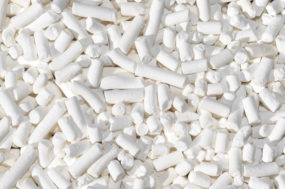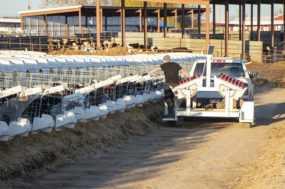Digest Highlights: ‘Dream Act’ seeks to protect young immigrants. Negotiators asked to defend cheese names in NAFTA. Health and taste have biggest impact on consumer choices for milk. FDA urged to act on imitation dairy labels. A Pew report reviews antibiotic alternatives. Find a summary of these and other news here.
‘Dream Act’ protects immigrant students, creates path to citizenship
A bipartisan bill allowing immigrant students who grew up in the U.S. to earn lawful permanent residence and eventually American citizenship has been introduced. U.S. Sens. Lindsey Graham (R-South Carolina) and Dick Durbin (D-Illinois) introduced the Dream Act, providing immigration status protections for so-called “Dreamers,” young people who have lived in the U.S. since they were children.
The Dream Act would allow these young people to earn lawful permanent residence and eventually U.S. citizenship if they:
• Are longtime residents who came to the U.S. as children;
• Graduate from high school or obtain a GED;
• Pursue higher education, work lawfully for at least three years, or serve in the military;
• Pass security and law enforcement background checks and pay a reasonable application fee;
• Demonstrate proficiency in the English language and a knowledge of United States history; and
• Have not committed a felony or other serious crimes and do not pose a threat to our country.
A current program providing temporary protection, the Deferred Action for Childhood Arrivals (DACA) initiative, was created by President Obama in 2012. A second initiative, the Deferred Action for Parents of Americans and Lawful Permanent Residents (DAPA), allowed parents to stay in the country in an effort to keep families together.
However, those initiatives face legal challenges and have come under criticism from the Trump Administration. A federal district court in Texas granted an injunction in February 2015, and in June 2016, the U.S. Supreme Court split 4-4, leaving the programs blocked by the lower court’s order. Read: Court ruling, election will determine immigration reform pace and direction.
Farmer’s share of food dollar less than 16 percent
Based on June 2017 prices from USDA, U.S. farmers and ranchers received about 15.6 cents for every $1 spent by consumers at the retail level, with the rest going for marketing, processing, wholesaling, distribution and retailing. A producer’s share of a gallon of fat-free milk, selling for $4.49 at retail, was $1.44, according to the National Farmers Union.
Health, taste impact consumer choices for milk
What affects consumer decisions regarding fluid milk purchases? It’s no real surprise, but North Carolina State University researchers have concluded health benefits and taste are the two most important factors.
Those who drank plant-based alternatives did so due to a desire to consume fewer animal products, and their beliefs regarding animal treatment and environmental impact.
The article, “Drivers of choice for fluid milk versus plant-based alternatives: What are consumer perceptions of fluid milk?” appeared in the August 2017 issue of the Journal of Dairy Science.
Vilsack: Defend cheese names in NAFTA
U.S. Dairy Export Council (USDEC) president and chief executive officer Tom Vilsack says U.S. officials must move quickly on North American Free Trade Agreement (NAFTA) renegotiations to prevent the European Union (EU) from making a deal with Mexico that would give it exclusive rights to common cheese names.
The EU has been aggressively negotiating with countries around the world for "geographical indications" (GIs) that would grant EU countries exclusive use of common food names, including cheeses such as "parmesan," “asiago,” “feta,” “fontina,” “gorgonzola” and “munster.”
Videos of Vilsack's full testimony and answers to congressional questions are available on the U.S. Dairy Exporter Blog.
NMPF presses FDA on imitation dairy labels
The U.S. Food and Drug Administration’s (FDA) failure to enforce food standards has allowed the marketing of hundreds of deceptively labeled dairy imitators – a situation requiring immediate action, National Milk Producers Federation (NMPF) officials told the agency during a meeting, July 25.
NMPF staff, led by president and CEO Jim Mulhern and Beth Briczinski, vice president for dairy food and nutrition, met with FDA regulators to discuss the organization’s concern over labeling practices of plant-based food manufacturers. According to the NMPF officials, plant-based “milk” imitators have flooded the market, using dairy terminology and imagery to advertise their products as suitable replacements for cow’s milk.
While FDA’s standards of identity stipulate products labeled as “milk” must come from a lactating animal, NMPF officials said FDA has turned a blind eye to violations of these standards for two decades, thereby allowing imitation dairy manufacturers to inappropriately use “milk,” “cheese,” “yogurt” and “ice cream” when marketing their products.
NMPF surveyed imitation dairy beverages in the marketplace, concluding none of the products matched the nine essential nutrients found in cow’s milk.
The meeting also allowed NMPF to highlight international labeling requirements. Canada requires U.S.-based companies to change the wording on their labels to comply with the country’s own rules. The European Union Court of Justice recently determined products not sourced from an animal cannot bear the terms “milk,” “cheese” and so on.
Pew Report reviews antibiotic alternatives
With increased regulation of antibiotics in animal agriculture, a new report from The Pew Charitable Trusts explores ways to “maintain healthy herds and reduce the need for antibiotics.”
Titled Alternatives to Antibiotics in Animal Agriculture, the report discusses animal health solutions using probiotics, prebiotics, immune modulators, organic acids, antimicrobial peptides and vaccines, among others. The report also highlights the ways these alternatives interact, providing information enabling the optimization of animal health care in the wake of reduced antibiotic use.
The report was reviewed by several prominent university animal scientists, but neither the reviewers nor their organizations necessarily endorsed its findings or conclusions.
Organic milk production growth outpacing market
The rate of 2017 U.S. organic milk production is growing about 5.5 percent, well above the 1 percent comfort level of some processors in terms of expanding processing, distribution and sales. There is some apprehension as to the ability of processing capacity and sales, both retail and wholesale, to absorb the entire increase, according to USDA’s Organic Dairy Market News.
Processors have been unable to accommodate dairy producers in transition to organic, and signing new prospects is near zero. Very few dairy producers are scheduled to complete the transition process beyond the end of 2018.
The quality and quantity of organic feed grown during the current growing season is yet to be determined as weather conditions play out. Growing conditions have been challenged in a number of areas by nigh constant wetness.

-
Dave Natzke
- Editor
- Progressive Dairyman
- Email Dave Natzke





